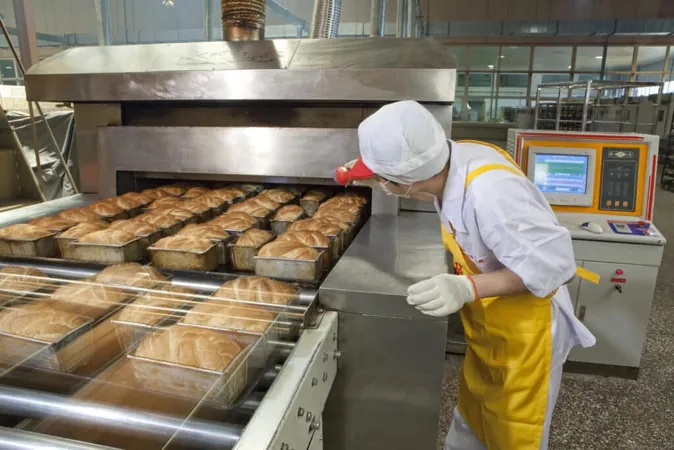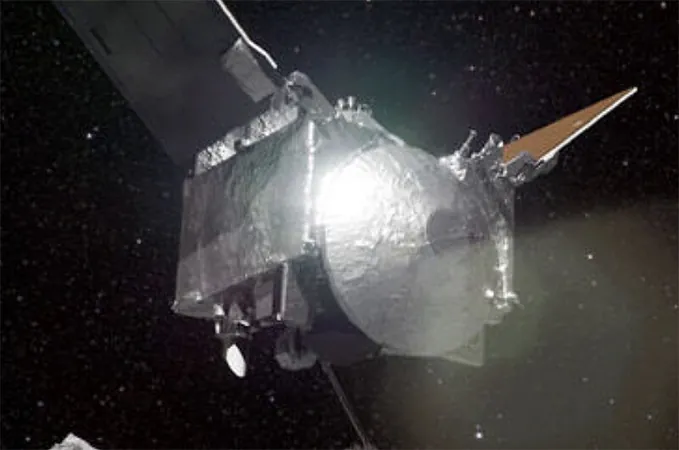
Can We Finally Detect Salmonella Early in U.S. Food Manufacturing? The Answer Might Surprise You!
2024-10-02
Author: Rajesh
The Importance of Salmonella Detection
The detection of Salmonella in food production is paramount to averting foodborne illnesses that impact millions annually. As a notorious bacterium commonly residing in the intestines of both humans and animals, Salmonella is a leading culprit behind foodborne infections, manifesting through severe symptoms like diarrhea, fever, and abdominal cramps. In the United States, pivotal federal entities, chiefly the Food and Drug Administration (FDA) and the U.S. Department of Agriculture (USDA), are at the forefront of ensuring food safety while actively combating Salmonella contamination in the food manufacturing sector.
A Brief Journey Through History: Salmonella's Tale
The saga of Salmonella detection has been a central public health challenge in the U.S. for over a century. It was first pinpointed by veterinary surgeon Daniel Elmer Salmon in 1885, and since that time, methods for identifying and managing its spread have advanced dramatically. Initially, Salmonella detection relied heavily on culture-based techniques — laboratory tests that required time to yield results. This lag often rendered them ineffective in preventing contaminations, highlighting a desperate need for more prompt and precise detection strategies.
As food production evolved into a more industrialized process, Salmonella outbreaks — particularly linked to poultry, eggs, and fresh produce — underscored the urgency for rigorous monitoring within food processing facilities.
Revolutionizing Detection: The New Age of Technology
Gone are the days of waiting for lab results to confirm Salmonella presence! Cutting-edge technologies have transformed detection processes. Notably, molecular-based methods such as Polymerase Chain Reaction (PCR) represent a seismic shift in how the industry identifies contamination. With capabilities to detect Salmonella in just a few hours, this technology allows food manufacturers to catch potential threats before products leave their facilities. By amplifying Salmonella’s DNA, PCR can detect even minuscule quantities, proving critical during outbreak investigations by distinguishing between different strains of the bacteria.
Additionally, real-time biosensors now offer continuous monitoring capabilities, integrating seamlessly into food production lines. These advanced sensors easily pick up on specific molecules associated with Salmonella, providing manufacturers immediate insights and the chance to nip contamination in the bud.
Whole-genome sequencing (WGS) stands as another revolutionary tool. This technique plummets deeper into Salmonella's DNA, enabling unparalleled strain identification and contaminant tracing. During outbreaks, WGS becomes invaluable for connecting particular strains back to their respective sources, thereby refining the response to food safety issues.
The Regulatory Backbone: Navigating Food Safety Policies
In the U.S., the landscape for Salmonella detection is also shaped by intricate regulatory frameworks led by the FDA and USDA. The FDA predominantly governs the safety of most food categories, while the USDA targets meat, poultry, and egg production. These agencies enforce stringent regulations surrounding Salmonella testing and control within food manufacturing facilities.
The Food Safety Modernization Act (FSMA), enacted in 2011, marked a historic shift by emphasizing prevention over reaction to food safety challenges. Under FSMA, food manufacturers must execute comprehensive hazard analyses and risk-based preventive measures, which include proactive testing for pathogens like Salmonella. As a result, inspections within food manufacturing facilities have surged, making modern detection technologies more integrated into standard practices.
The USDA's Food Safety and Inspection Service (FSIS) is equally crucial, enforcing performance benchmarks for Salmonella in meat and poultry products and routinely conducting tests to ensure these benchmarks are met.
Unmasking the Challenges: The Fight Against Salmonella
Despite advancements, the battle against Salmonella detection is fraught with challenges. The bacterium often lurks in low concentrations, eluding traditional detection measures. Its propensity to form robust biofilms on production surfaces complicates sanitation efforts, shielding the bacteria from cleaning routines.
Moreover, Salmonella's remarkable adaptability allows it to thrive in diverse environments, including dry goods such as spices and nuts, making it difficult to eradicate following cleaning protocols.
Looking Ahead: A Safer Future for Our Food Supply
As the landscape for Salmonella detection has dramatically shifted from the cumbersome days of culture-based assessments to today's revolutionary technologies, it is clear that more work is imperative. While modern advancements like PCR, biosensors, and WGS have significantly enhanced detection speed and precision, ongoing research and development are crucial to overcoming persistent challenges.
Supportive regulatory frameworks, particularly the proactive approach mandated by FSMA, alongside the vigilant efforts of agencies like the FDA and USDA, are essential for ensuring food producers deploy the best detection methods available. By continuing to embrace innovation and invest in research, the United States is on a promising path towards dramatically reducing Salmonella risks in food products. And ultimately, this journey enhances the overall safety of the food we consume!
Stay informed and be proactive – your health may depend on it!



 Brasil (PT)
Brasil (PT)
 Canada (EN)
Canada (EN)
 Chile (ES)
Chile (ES)
 España (ES)
España (ES)
 France (FR)
France (FR)
 Hong Kong (EN)
Hong Kong (EN)
 Italia (IT)
Italia (IT)
 日本 (JA)
日本 (JA)
 Magyarország (HU)
Magyarország (HU)
 Norge (NO)
Norge (NO)
 Polska (PL)
Polska (PL)
 Schweiz (DE)
Schweiz (DE)
 Singapore (EN)
Singapore (EN)
 Sverige (SV)
Sverige (SV)
 Suomi (FI)
Suomi (FI)
 Türkiye (TR)
Türkiye (TR)